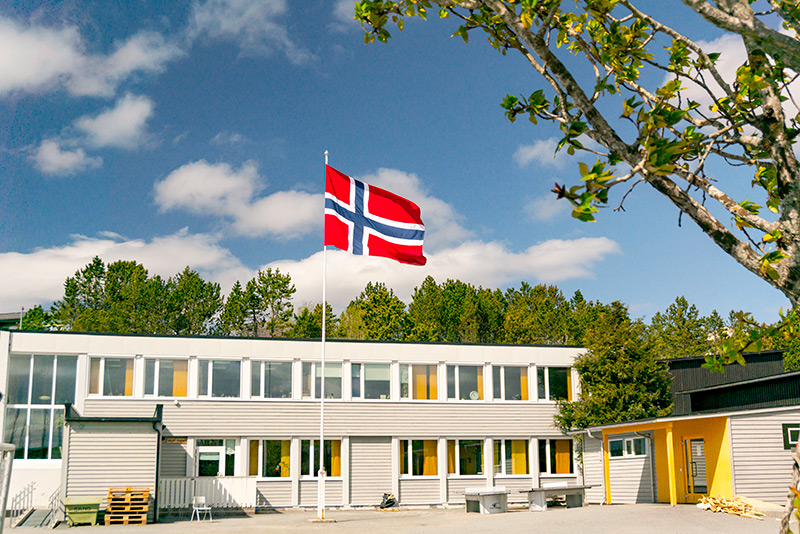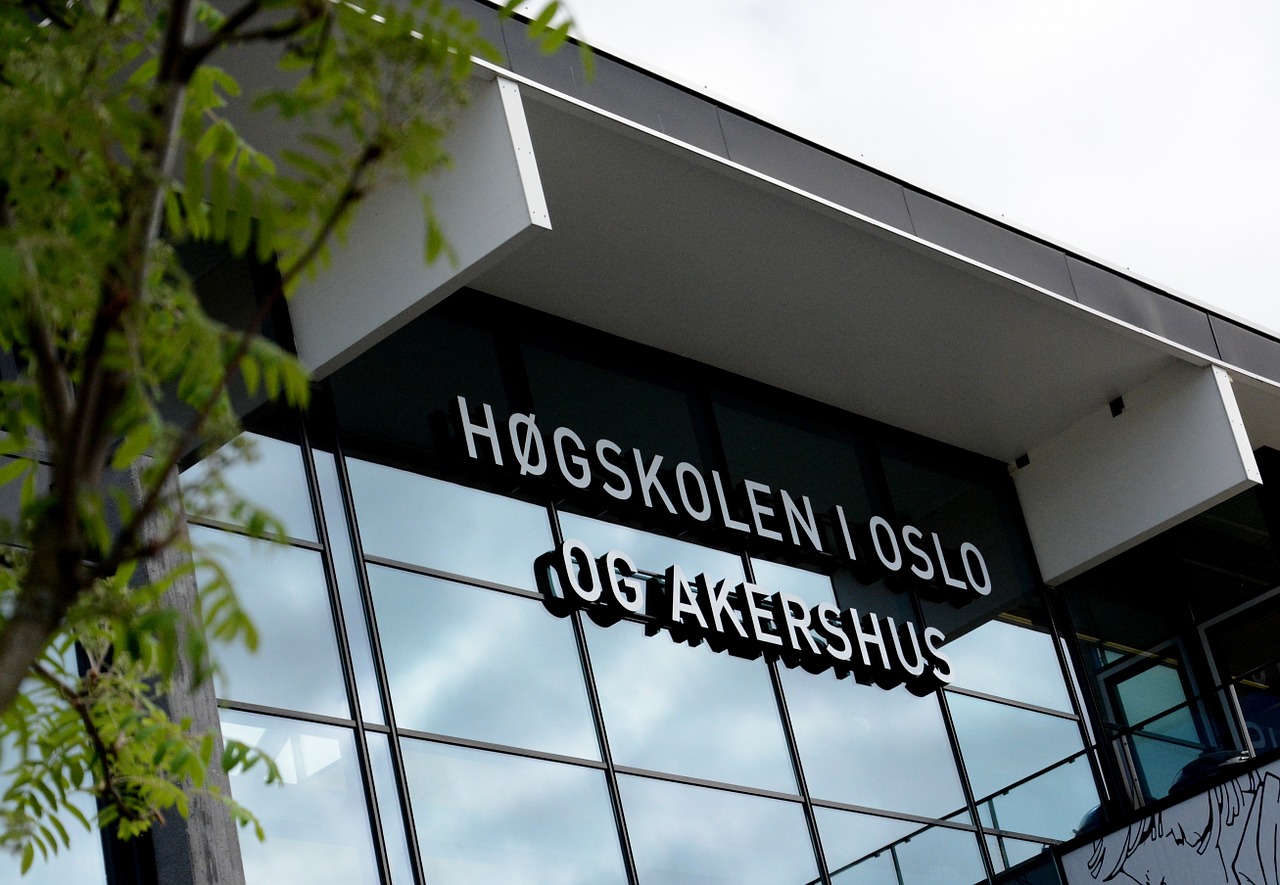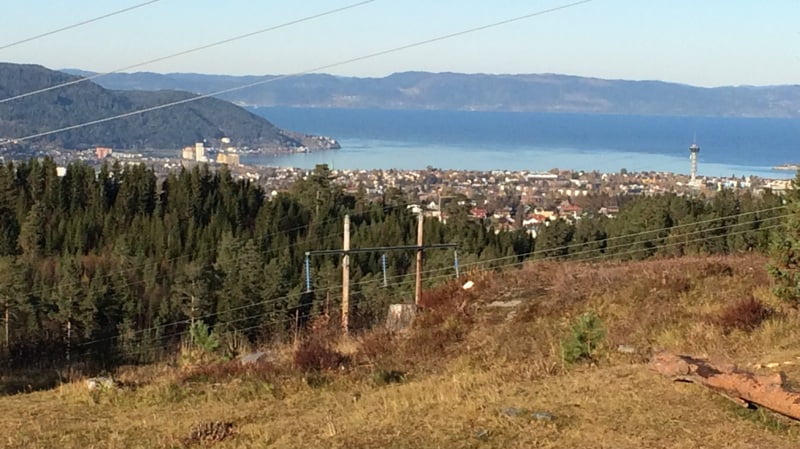
A new twist on the expat story: Follow the adventures of a wandering Norwegian family returning home.
It’s 11.30 pm and it has been a very long day indeed. I am queueing at the SAS counter, Gardermoen Airport, waiting to check in our two cats that have come with us from Oman. Their cages are wobbling precariously on a trolley the 11-year-old owner of said cats insists on pushing himself.
I am hidden behind a mountain of bags stacked on another trolley and I wish I was the cat, fast asleep on a soft blanket. It’s cold, I’ve been up since 4.30 am and this is the third airport I navigate today. “This,” I mutter grumpily to myself,“must be the dark side of corporate travel.”
Introducing the Norwegian nomads
No Financial Times, no double espresso to go, no Armani suit and certainly no carry-on only. I’ve spent the last 15 years moving my family across international borders for a corporate job. Not my corporate job, but let’s not get into that.
Now, we’re ‘repatriating’ to Norway. I use the term in the loosest of ways, referring to the return of someone to their country of citizenship or the country that is legally their own.
Norway is our country of citizenship, but my husband and I have been away for a long time. We met in the deserts of Oman. Our kids were born in Muscat and Damascus. They learned to walk in the jungles of Borneo and swim off the coast of Lebanon. They speak English and read Arabic, and they master Norwegian with a slight ‘can’t-quite-put-my-finger-on-it’ twang.

We know how to navigate international schools, airports, new countries and new cultural codes, but I suspect that our ideas about life in Norway are grossly outdated and should be used as a vague mind map at best.
We need to learn what it means to parent in Norway, and what it means to grown up in Norway. This family of Norwegian Nomads have returned home for now – join us as we find our way.
We have a lot to learn…
It’s the first day of school after Christmas break in Norway. I have packed my three kids into the back of the car, and we’re staring out into darkness. The roads are icy and the wind freezing, our ratty rental car struggling to clear the windows. I’d have loved nothing more than surrender to the weather and spend my day on the sofa and I’m pretty sure the kids feel similarly, shivering in their too-new-for-comfort winter outfits.
Half way down my quiet residential street, I spot the first little Teletubby; a small child, bundled up in a red winter suit, sporting a headlight, a reflective vest and a massive backpack.
He seems determined, this little guy, waddling into the chilly wind. As we approach school and 8.15 am, they’re suddenly everywhere – little reflective bundles, headed for the local elementary school. I look at my sleepy three, trying (and failing) to imagine them braving the cold and dark morning hour. “Little grasshoppers,” I think to myself, “it seems we have a lot to learn.”
It has been two months since our family of five repatriated to Norway after 15 years as high mobility expats. School is perhaps the major player in the game for families on the move, and our family is no exception.
Local school or some form of international school? In which language are the children educated? Are curricula transferable? Will a move cause them to lose academic credits or halt their progress? The questions are many, and the answers often hard to find.
The Norwegian school system
School in Norway is mandatory from age 6 and public school – taught in Norwegian, following a Norwegian curriculum – is free for all residents.
Read more: The Norwegian education system
While you can in some areas of the country chose which public school to send your child to, the norm is to attend your local catchment area school. Elementary (grade 1-7) and middle school (grade 8-10) are compulsory while high school (grade 11-13) is not.

Private schools are usually an option in urban areas. Where we live, private schools range from various international schools, through alternative curricula schools such as Waldorf/Steiner, to religious schools like Stavanger Christian Elementary School.
Planning for our repatriation, we looked at all options except religious schools, and landed on a public primary school in a middleclass area hosting 350 students.
Our three kids transferred from a multicultural, multilingual English medium international IB school hosting 1200 students from K1 through high school in Oman. They were used to long sunny days, limited outdoor and play time, and for the oldest one, a crippling amount of homework.
They took the fleet of mummy-driven cars at drop off and pick-up for granted and accepted the limited independence their days held because they knew no alternative. As parents, we were used to a seemingly endless stream of information, signed disclaimers for every trip out of school and frequent requests for volunteer parental involvement.
Read more: International schools in Norway
Norwegian school, it turns out, is like nothing we’ve ever experienced before; but in a good way.
The kids are alright
“Mamma, stop coming in to pick me up at school!” The littlest one is adamant, stomping her wellie-clad foot sternly, mud flying up my leg. “None of the other kids’ parents come to school to collect them. Unless they’re (she pulls her nose up weirdly, making a grimace and a snort) first-graders!”
In Norway, the norm seems to be for kids, even young ones like my littlest one, to tackle the school route unsupervised. Most families live relatively close to school and while some children are dropped off by parents, the vast majority at our school arrive on foot, scooter or bike – even on cold and wet days. There is no pick-up system and once school is finished, the children are free to go; no adult needed to sign off on taking responsibility for them.
For us, this is a brave new world indeed. My kids love the freedom of movement this new norm represents and have embraced ‘taking responsibility for arriving at school on time’ wholeheartedly. It’s fair to say that we ran into some trouble with return from school during the first weeks in our new house, mainly related to poor sense of direction (the littlest one) and shaky hands from high caffeine intake to ward off shaky nerves (me) but teething troubles aside, the kids are all right, and we love it.
Fresh air and free play, short days and, well, fun!
“Mamma, look out!” He flies past me, grinning, sending up a spray of grey water as his feet hit the ground. “Sorry I’m late! I’m just getting my shoes! he yells.”
His shoes, it turns out, got drenched during second break’s muddy football match and he is now running around in his socks. I feel bad for the dentist we’re about to visit, as well as whoever cleans the dentist surgery floors, but decide to simply let this go because I haven’t seen him coming out from school looking this energetic in years.
Norwegian school days are short. Ours start at 8.15am and end at 1.10pm or 1.55pm, depending on the age of the child. In those 5-6 hours, the children have three breaks; one for lunch and two for fresh air and running around.
Being outside during break time is non-negotiable and a wide range of activities are provided, ranging from playgrounds and open areas through football pitches and basketball courts to ping-pong tables and giant chess boards.

Young kids commonly have weather appropriate clothing in their bags or simply hanging at school, since ‘bad weather’ does not qualify as reason not to spend breaktime outside. Sadly, by age ten ‘cool’ seems to trump ‘dry and warm’ and drenched shoes, socks and jeans now litter my floors.
Occasionally, the teachers decide to take the kids for excursions; so far, the middle one has visited the ice-skating rink (twice) and a dance studio. As parents, we are informed that the trip will take place, but that’s it. Parental assistance is rarely requested, no disclaimers are signed, and the kids bike, walk or make use of public transport.
Some of my non-Norwegian friends cringe when I tell them about the Norwegian school day. They struggle to understand how the students manage to learn anything at all, given that they seem to spend more time getting dirty than memorizing times tables and are finished at an hour that is, frankly, remarkably early.
I get that, really, I do. Sometimes, we compare our kids’ current academic progress to what we are used to, and we cringe a little too. The middle one seems to be redoing grade 2 math and the oldest one wants to know what happened to science.
But life is short, childhood is shorter, and they’re so very happy. Muddy, stinking, and grinningly happy. Once upon a time, a wise preschool teacher reassured me that my son (aged three at the time and to my distress, still in nappies) would not get married in nappies.
I should relax, because there is a time for everything. I take that to heart now, that my children are nearing their teens. This may be their last chance to run in mud – so I let them.


Du skriver kjempe godt Tone. Og er det veldig kjekt å lese at alle 3 barna har det bra. Hva med deg da? Går det greit eller?
My concerns are about the schools. We have four children, 14, 12, 10 and 8. Do you know of anyone who has been in this situation (maybe not as many kids :)? Would we be required to enter our children in an international school, or does Norway have programs for returning Norwegians ?
Hei! Så fint at du leser! Vi har det fint, takk – vi kan kanskje snakkes på mail eller privat messenger?
Hi, Norwegian school is free for all residents so if you live in Norway you don’t have to send your children to international school – even if you have four kids:) If they are not considered fluent enough in Norwegian (or don’t know Norwegian at all) to attend Norwegian school, they will be sent to an ‘integration stream’ until their language skills are considered adequate. I have kids similar age to yours and I’d say that if the children don’t master Norwegian well enough to use it as an academic language, integrating into middle school (grades 8-10) might be a challenge. Starting middle school, they are graded and their results determine their high school choice and ultimately university, if that’s something they’d like to do. Mine have managed remarkably well language wise in their all-Norwegian elementary school. Feel free to PM me if you’d like to discuss your options.
Hi Tone,
I will be moving to norway next year from Perth. My biggest concern is the education of my 9 year old son. I prefer not to send him to International School. Do you think that he can pick up the curriculum in norwegian quickly (I mean generally?). He havent learn norwegian before. Any advise from you is highly appreciated.
Thank you
Alex
Hi Tone,
I really enjoyed reading your article. I am relocating to Norway from the Middle East after being away for 20 years. While my husband and kids have visited Norway many times, I think living there starting next summer will be a different experience.
It would be great if we can connect as I am doing my research about which schools to select and what to consider. My kids are 9 and 10 years old.
Hi Neeta,
I’m so sorry to not have replied to your comment sooner! I don’t admin this page and hadn’t seen it. I guess this is a little too late and you’re already in Norway but I’m always happy to connect:)
I really loved your post. Could really feel the joy the kids must be feeling though the freedom of going alone and all I wonder how my kids would survive or rather I think its me! 🙂
Hi Hiba, thanks for reading:)
All moves or indeed big changes are a bit scary, I think, and indeed, I was nervous sending the children off on their own even though that’s how I grew up myself! They’re all settled now, and love their freedom. Take care
I am a Nigerian from an English speaking background. I will be relocating to Norway this winter/spring season. Even though Norwegian language schools are free, how do my children cope with it. The private school fees are pretty high. How do we cope.
Hi Kenneth, thanks for reaching out. It’s difficult for me to say how your kids will cope with attending school in an unfamiliar school system and a language they don’t master. On a general note, I think it is worth keeping the difference between BISC and CALP (see for example http://esl.fis.edu/teachers/support/cummin.htm) in mind, and expect that a school transfer can be more challenging for an older child who needs to master a low context academic level of Norwegian in order to succeed in school. Once you know which city you’ll be relocating to, the local municipality, as well as local international/English medium schools, will be able to advise you on your options. Best of luck with your transition.
Hi, my name is Sana, we are relocating from Dubai to Norway. I have 2 boys 1 aged is 5 n older one is 9. Currently they are in American curriculum school. We will be relocating in December or starting of 2023 January. Is there any school which can give admission to my children in the middle of academic year or I have to wait for the new academic year. Thanks